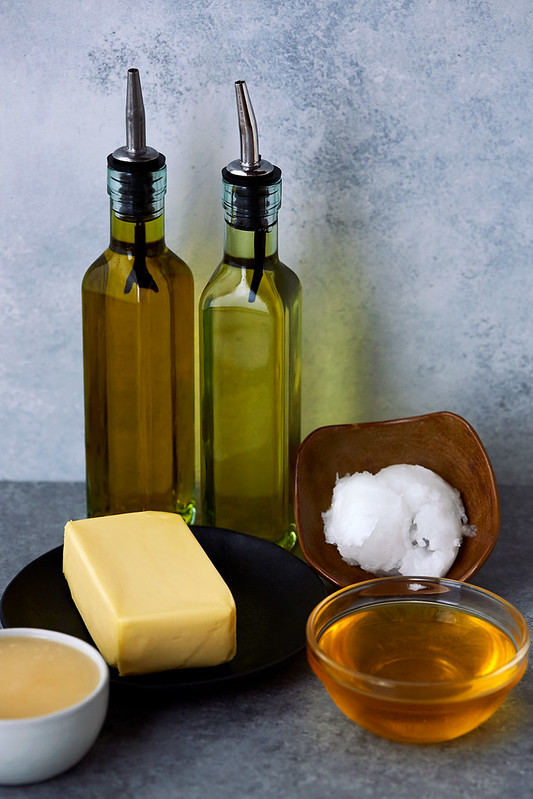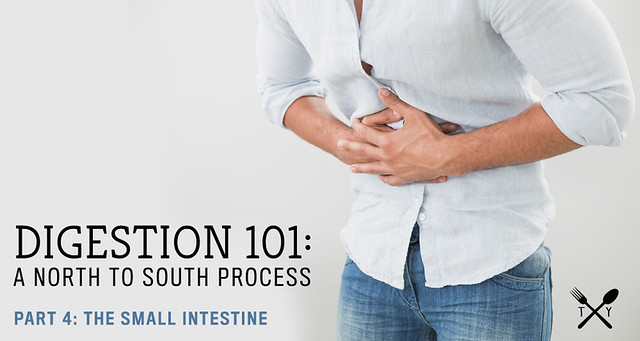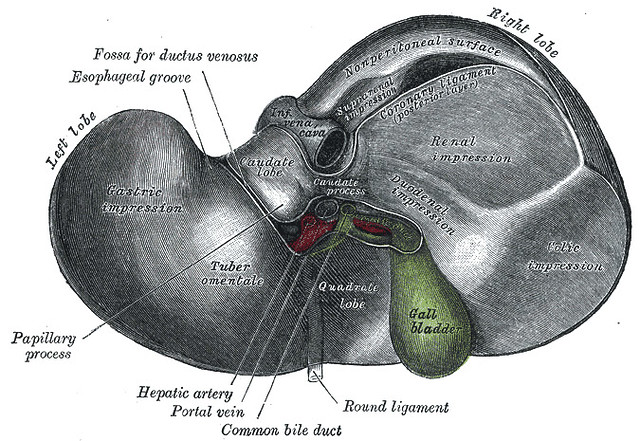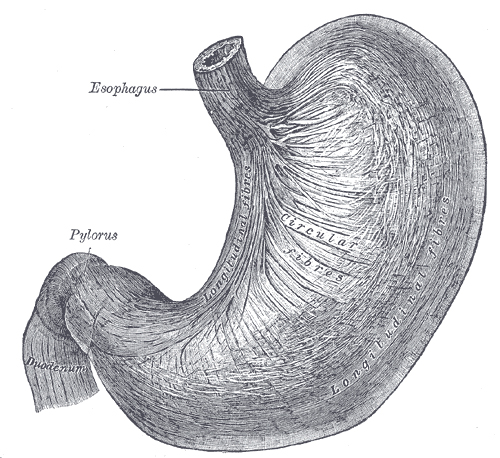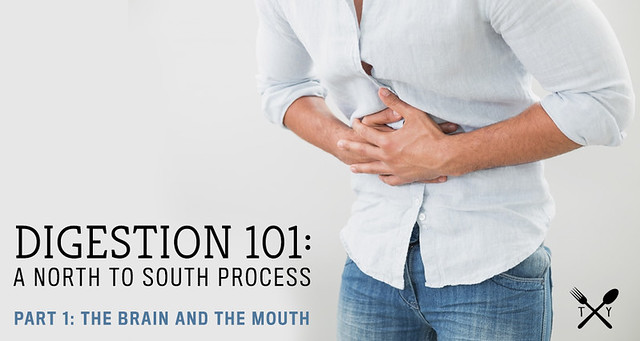-
Five Tips for Mindful Eating and Why it Matters {+ Video}

Mindfulness isn’t just yoga and meditation, burning sage and sitting on a meditation cushion chanting ‘OM’. Mindfulness can extend into all aspects of our lives with just a little conscious awareness and minimal effort. Mindfulness is derivative of a “monastic” practice, meaning it was originally made for monks. It utilizes deliberate focus to increase your consciousness and appreciation of the present moment.
One of my favorite methods for incorporating mindfulness with my clients is to do so at mealtime. When we aren’t totally present at meal time, if we aren’t eating mindfully, it can be a disaster for our digestion, for our stress levels, for our moods and many times we can end up accidentally overeating. Often the opposite of eating mindfully is eating mindlessly, and we all know how that goes for us.
The practice of mindful eating is all about learning to pay attention. It can be a form of meditation, almost. Instead of mindlessly shoveling food into your mouth almost unconsciously, not even tasting the food you’re eating, I want to teach you how to slow down and savor your meals. With mindful eating we take the time to pause, to notice thoughts, feelings, and sensations surrounding our meals and to truly taste each bite. I have found this practice be vital to eating intuitively and finding a lifestyle that is appropriate for the individual.
Not only will this make meals more pleasurable and delightful to ALL our senses, but it’s also better for our digestion and it keeps us from overeating.
When our body is in a chronic state of stress, our nervous system will actually shut down our digestion system, as a protection mechanism. This is why one of my all time favorite tips for folks deal with digestive issues to take a look at the stress in their life and even more specifically the stress around meal times.
As well, when we are stressed or not paying attention it’s hard to truly understand and realize the need to stop when we are satisfied, we cannot do any of this if we are on autopilot, shoveling food into our faces.
As far as I am concerned, if you’re not truly tasting and enjoying your food – that’s a problem. How can you ever expect to be able to listen to your body’s subtle cues, to tap into your intuition and
Mindful eating is not a quick fix, but very often it is a very valuable solution, of course it’s also FREE and like most important things in life, it takes practice.
Before we get into the mindful eating tips, I wanted to very quickly explain some of the important things you NEED to know about digestion and why mindful eating can help.
-
Six Functional Wellness Tips to Boost Your Energy
Here are my top six tips to boost your energy. These are simple, inexpensive functional wellness focused approaches that are KEY for supporting healthy, balanced energy levels. Read on to learn how you can easily manage the energy crisis going on in your body!

One of the most common responses I get with my health coaching and nutrition clients when we discuss their top 5 health concerns, at the start of our time together – ENERGY!! I have heard every version of – “I have no energy”, “Why am I so tired all the time”, “How can I have more energy later in the day?”, “I NEED my coffee to get through the afternoon”, “My energy levels are the worst they’ve ever been?”, “how can I boost my energy?”
This common issue is not unique to my parents, to just women or the folks working long hours – this is probably one of THE MOST universal health issues I see across the board, with all of my clients.
We are dealing with an energy crisis in our own bodies. Crashing after breakfast around 10am, using coffee and energy bars to push through, then there is that dreaded 2pm slump. More coffee. More snacks. And finally, despite a desperate desire to want to hit the gym or that yoga class after work, you simply just can’t even. It’s not a lack of willpower or motivation, you are simply lacking the energy and there are probably some VERY simple reasons why. Lucky for you, it can be a fairly simple and inexpensive path to remedy this, if you are committed to doing the work and putting in some time to making a few changes.
These are my SIX functional wellness tips to boost your energy and manage the issue on a foundational level rather than simply dealing with the symptoms of fatigue and at times even depression that can result from a lack of energy!! Put down the coffee, energy drinks, bars, bites and balls and let’s get to the root of it….
-
Is Snacking Healthy? Should You Snack? + Smarter Snack Ideas
Is snacking healthy? Should you snack? If you find you are chronically grazing on many small meals throughout your day because of excessive hunger, you can likely blame imbalanced blood sugar and not eating for satiety. In this post we talk about snacking along with some healthy snack ideas for when a gap snack might be necessary.
Is Snacking Healthy? Should You Snack?
Let’s talk about snacks baby. Let’s talk about you and me. Let’s talk about all the good things and the bad things, that may be. Let’s talk about snacks! hahah. Sorry. I digress. Seriously though. Determining what to eat is challenging enough of a question, but add to that, the question of when and how often to eat – this adds a whole new additional layer of unanswered inquiries and confusion for many.
Smaller More Frequent Meals Helps Boost Metabolism, Right?
While convention nutritional advice long touted 5-6 small meals throughout the day as a means to increase your metabolism and encourage fat loss, this antiquated approach doesn’t look at the full scope of our day and what is actually happening in the body with every snack or small meal. For so long, many “experts” believed the idea that many small meals is theoretically “stoking the metabolic fire,” while less frequent meals “slow your metabolism.” The thought process was that eating many small meals keeps your metabolism plugging away at a high rate for the entire day, helping you burn more fat. Conversely, it was thought that going too long between meals slows down your metabolism, so that when you do eat, your body is sluggish to respond to the caloric load and you end up storing it as fat.
Sounds pretty smart, right? But, guess what, it’s just not true. There isn’t any science to support it or research that proves smaller, more frequent meals has any metabolic advantage.
What we do know, as research has shown, the more you eat the more insulin your body releases, and this constant output of insulin interrupts the intended flow of blood sugar.
With every meal there is a rise in our blood sugar (which is just the amount of free glucose in our bloodstream) then a release of insulin follows. With lots of small meals through the day that means a blood sugar rollercoaster of highs and lows that can cause additional cravings, fat storage, mood changes, irritability and more.
Besides that, with every meal or snack that we eat, our body has to begin the process of digestion, this takes energy and time, as your body is breaking down the food into usable molecules that are absorbed by the body and utilized appropriately. This process takes energy away from other repairs and tasks your body should be doing. Anything we eat that the body cannot absorb or use in some capacity is then stored as fat. Whenever we snack this stops the process of our body using stored body fat in between meals.
The goal is to instead build a day with more steady blood sugar by getting enough fat and protein at every meal to reach satiety and not solely relying on refined starchy carbs and sugar for quick hits.
-
Happy Hormones: The Importance of Digestion to Hormone Balance
This is the third Happy Hormones post in our Hormone-Focused Series from Nutritional Therapy Practitioner Brynn D’Avello. I suggest reading the first post The First Step to Happy Hormones and then the second post where we tackle how Blood Sugar Imbalance Affects Your Hormones before you dive into this post covering the Importance of Digestion to Hormone Balance.
As we discussed in the previous post in this series, as important and crucial as blood sugar regulation is to hormone balance in this latest installment we will discuss how digestion is a very, very close second. Since I know Beth has done a killer job breaking down the digestive process in her Digestion 101 series I am only going to touch on the highlights…. with a very special emphasis on the liver.
Digestion is a North-to-South Process, and to help strengthen it effectively we must naturally start at the top and work our way down. Most of us would assume that the first step to digestion is in the mouth, but you actually have to go a little bit higher than that. The brain. To activate salivary enzymes your brain must be engaged. That’s why your mouth waters when you smell something delicious. It’s getting the signal that food is coming its way, and saliva, in addition to chewing thoroughly, helps start the breakdown of food into useable nutrients. (You can read more here about the roles that our brain and mouth play in digestion) Once our food gets to the stomach, gastric juices go to work on proteins and then it gets passed on to the small intestine. Here is where the gallbladder kicks in. Bile is secreted to emulsify the fats in our food to assimilate the necessary elements, to be used effectively. Without good quality bile, fats are not digested properly. Fats are absolutely critical to the entire endocrine system. Our body cannot produce hormones without fats.
-
The Benefits of Eating Liver: Nature’s Most Nutrient-Dense Superfood
The Benefits of Eating Liver are abundant and very well documented. Liver is nature’s most concentrated source of vitamin A; it is also abundant in B12 and other B vitamins, plus iron, choline, copper, folic acid, purines and natural cholesterol. It’s also a fantastic source of magnesium and phosphorus. Liver has also been shown to contain a not-yet identified anti-fatigue factor.
I live by the rule: never say never! In the past I have tried eating liver several different ways and while I really wanted to like it, I just couldn’t get down with it. I didn’t love the taste, or truthfully there was something off-putting about knowing what I was actually eating. I had a hard time looking at it, even. I kinda always knew it was good for me, but I honestly didn’t know to what extent and while I tried, I just couldn’t bring myself to eat it. However, I refused to ever say “I will NEVER eat liver” – rather I thought: someday I will find a way to like it.
The more I learned about liver, especially during my time in school with the NTA and in doing my own research, the more I was determined to find a way I could and would enjoy it. At first, it started with liver supplements, so I could reap the benefits of liver without having to eat it. The effects were so profound that I finally decided one day to just try paté at a restaurant while traveling. I liked it. I actually liked it a lot. I came home and promptly ordered a liver from the incredible farm we get all of our pasture-raised meat from, Diamond Mountain Ranch, and I decided it was time to just dive right in and make it myself.
The Offal Truth:
While many people assume that plant-based foods: vegetable and fruits are the most nutrient dense foods on the planet, I think most would be surprised to learn that organ meats (also called offal) actually far surpass most plants for nutrient density and at the top of that list is liver. Organ meats contain some of most highly prized nutrients in concentrations hard to find anywhere else. This is why predatory animals eat it first, instinctively knowing that organ meats are the densest source of nutrition and why it has been so highly celebrated throughout history. Prior to modernized culture and our industrialized food systems, traditional food cultures generally ONLY consumed the organ meats, the lean muscle meat, that we consume today was thrown away or used to feed other animals.In general, organ meats are between 10 and 100 times higher in nutrients than corresponding muscle meats.
All that being said, none of this is to at all say that fresh produce isn’t of equal importance. Fruits and vegetables are rich in phytonutrients like flavonoids and polyphenols that aren’t found in high concentrations in meats and organ meats, so it’s just as vital to include an abundance and array of fresh produce as a significant part of your diet.
Nature’s Most Nutrient-Dense Superfood
So why is liver so incredible? To simplify it, liver contains more nutrients, gram for gram, than any other food.
Quality Grass-fed Liver Provides:
- An excellent source of high-quality protein
- Nature’s most concentrated source of vitamin A
- All the B vitamins in abundance, particularly vitamin B12
- One of our best sources of folic acid
- A highly usable form of iron
- Trace elements such as copper, zinc and chromium; liver is our best source of copper
- An unidentified anti-fatigue factor
- Three ounces of quality beef liver contains almost three times as much choline as one egg
- CoQ10, a nutrient that is especially important for cardio-vascular function
- A good source of purines, nitrogen-containing compounds that serve as precursors for DNA and RNA
- It also contains a mysterious “anti-fatigue factor,” making it a favorite among athletes 1https://www.westonaprice.org/health-topics/food-features/the-liver-files/
References
1. ↑ https://www.westonaprice.org/health-topics/food-features/the-liver-files/ -
Cooking Fats and Oils: Which to Include and Which to Avoid
Cooking Fats and Oils: Which to Include and Which to Avoid
Fats and oils are a necessary part of cooking, but using the right ones are down right essential to living a healthy and vital life. Just like rest of what we eat, a good rule of thumb with fats and oils is to always opt for organic and you should avoid overly-processed, highly refined fats and basically anything that your grandmother wouldn’t recognize as traditional food (i.e. basically ALL highly-refined vegetable and seed oils) – but to be frank, there is a lot more to the story! Not only do the types and quality of fats and oils matter – but so does their proper use. Honoring the various molecular structures of the different fats is the best way to insure that you are using them appropriately, without causing damage to the fats and in turn, negative affects on our health.
Here is a quick resource guide including the various uses for each:
-
Digestion 101: A North to South Process // Part 5: The Large Intestine
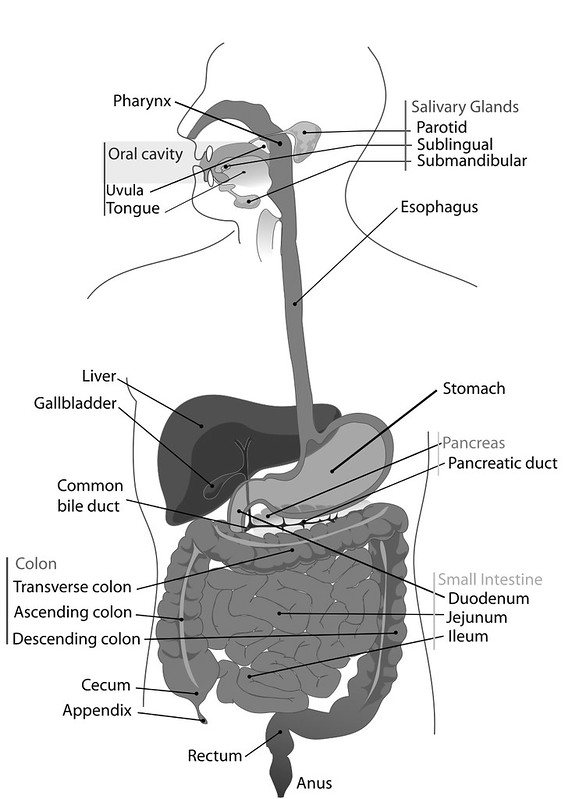
Digestion 101: A North to South Process
Here we are, at the end of the road. The large intestine is the final step in the process of digestion. By this point you probably more than understand the concept of digestion being a north to south process. We have talked about it at length starting first the brain and the mouth, and the importance of being in a parasympathetic state and properly chewing your foods, then of course the stomach and the dire need for proper hydrochloric acid production, how the accessory organs, the pancreas, liver and gallbladder continue the process of digestion, releasing bile, enzymes, various hormones and allowing the small intestines to finish digestion but more importantly do it’s very important job of assimilating nutrients and finally last but not least, the large intestine.
See Part One: The Brain and The Mouth
See Part Three: The Accessory Organs: Pancreas, Gallbladder and Liver
See Part Four: The Small Intestine
How it Should Work
The large intestine, or the bowel, is compromised of 3 sections, the cecum, colon and the rectum. The leftover chyme from the small intestines, passes through the illeocecal valve and first into the ascending colon. At this point in a healthy digestive system, what is left as chyme (the digested food) after the small intestines, is indigestible fibers, lots of water, sloughed off cells and bile. The large intestine is all about absorption and recycling.
As in the esophagus and the small intestine, the contents of the large intestine are pushed forward by a sequence of muscular contractions called peristalsis (a type of motility or muscular movement). After passing through the illececal valve the remains travels from the ascending colon, across the transverse colon where waste forms, into the descending colon, to the sigmoid colon and then the stool moves out of the body.
-
Digestion 101: A North to South Process // Part 4: The Small Intestine

Digestion 101: A North to South Process
As we continue more south in digestion, after first the brain and the mouth, then the stomach we move from the first part of the small intestines, the duodenum and it’s interaction with the accessory organs, the pancreas, liver and gallbladder and into the function of the small intestine.
After we leave the duodenum, the small intestine is less about the actual process of digestion, from a sense of breaking down the food we eat and it is more about the assimilation and absorption of nutrients.
The first part of the small intestines, the duodenum, acts more as a part of the stomach than the small intestine and the jejunum, ileum and villi are responsible for assimilation.
See Part One: The Brain and The Mouth
See Part Three: The Accessory Organs: Pancreas, Gallbladder and Liver

How it Should WorkThe small intestines have a dual role as an organ and a gland.
As we talked about in the previous post, The Accessory Organs – The Pancreas, Gallbladder and Liver, the small intestine releases mucous to keep things moving and it also releases two hormones: secretin and cholecystokinin.
Secretin stimulates the pancreas to release bicarbonate to lower the pH of the chyme and pancreatic juice. The CCK stimulates the gallbladder to release bile (to read more about these processes please see post #3).
By the time that the chyme has left the duodenum, thanks to the processes of the accessory organs, the chyme should be almost entirely digested.
- The carbohydrates have been broken down into glucose molecules
- Proteins are broken down into amino acids and polypeptides
- Fats are broke down into fatty acids and glycerol molecules
Peristalsis, a series of wave-like muscle contractions moves these absorbable molecules into the jejunum and the ileum, the middle and end parts of the intestine.
Within the small intestines, we have millions of villi, tiny finger-like projections that protrude from the epithelial lining of the small intestines. These villi and their microvilli absorb the nutrient molecules directly into the bloodstream, where they are carried throughout the entire body.
-
Digestion 101: A North to South Process // Part 3: The Accessory Organs – Pancreas, Gallbladder and Liver
Digestion 101: A North to South Process
As we continue more south in digestion, after first the brain and the mouth and then the stomach we move onto the accessory organs, the pancreas, liver and gallbladder
As we move further south from the stomach, while the small intestines are next in line for the food, but we first take a small pause/detour to discuss “the accessory organs of digestion”. The pancreas, liver and gallbladder, each play a very important role in the digestive process and each can be affected with their own dysfunction as well.
The stomach, small intestines and large intestines are all part of the system of digestion we call “the alimentary canal”, “the gut tube” or “digestive tube”. Between each of these organs we have valves or sphincters that keep the food where it is supposed to be and move it along when the time and the environment is right. These accessory organs are not a part of this tube or system but they play a major role in the process.

There is a synergistic and symbiotic relationship with the small intestines and these accessory organs, so we will discuss first how these play a role before we move into the function of the rest of the GI tract.
The duodenum is the start of the small intestine, but it almost acts more as part of the stomach, in it’s roles of breaking things down further playing a larger part in the process of digestion, vs the rest of the small intestine being less of a digestive organ and more about absorption or assimilation.
See Part One: The Brain and The Mouth
THE PANCREAS, GALLBLADDER AND LIVER:
How It’s Supposed to Work
When the pH of the chyme (the digested food moving from the stomach into the small intestines) is in it’s normal range, 1.5 – 3.0 , which we talked about in the stomach post. This is very acidic and necessary to the stomach performing it’s duties. As it hits the pyloric valve and into the duodenum with it’s proper pH, this is where the roles of the accessory organs come into play. This highly acidic chyme is what triggers these functions.
The duodenum no longer wants this highly acidic chyme and in order for the enzymes to work correctly it has to take that chyme to a neutral pH of 7.0. This happens by way of sodium bicarbonate, which is released by the pancreas to alkalinize the chyme. This release of sodium bicarbonate is signaled by secretin, a hormone released by the small intestines, which as you might have already guessed, is triggered by the (proper) acidic level of the chyme, that pH of 1.3 – 5. (Ahem, here is that reminder to look north, if the stomach isn’t producing proper HCl, then none of this will function properly, either!!)
-
Digestion 101: A North to South Process // Part 2: The Stomach
Digestion 101: A North to South Process
As we continue more south in digestion, after the brain and the mouth, next up we have the stomach. Before we get started, I wanted to remind you that you will constantly hear me reiterate as we go through this step-by-step process to “always look north” and I want you to truly understand what this means, exactly. I am referring to the fact that often times dysfunction that presents itself from further down the line, is actually due to a malfunction more north. For example, as you will read about in this second post and as we talked about briefly in the first, (the brain and the mouth), if you are eating in a stressful state and your body doesn’t make the necessary switch to that parasympathetic mode (rest and digest), then before your stomach ever had a chance to function properly, the brain basically threw it under the bus. So, while the symptoms may present themselves in the stomach (or even further south) it may not make sense to supplement, treat or approach the symptoms specifically until we instead move more north to investigate if these malfunctions are treatable with just some simple lifestyle and mindset shifts.

This is not at all to say that all digestive dysfunction starts in the brain, that would make my job and my own healthy journey so much simpler. In fact, there are many reasons why dysfunction can exist, as you will see, but beginning the investigative process at the start, way up north, allows us to rule out the possible, more simple resolutions before we move deeper and into more challenging treatments.
See Part One: The Brain and The Mouth
THE STOMACH:
How it’s Supposed to Work
After we chew our food, it turns into what we call a “bolus”. The bolus passes through the esophagus and the cardiac valve (the lower esophageal sphincter) and the bolus then enters our stomach, At this stage gastric juices are released. I like to think of the stomach as a blender. Mucous, pepsin and hydrochloric acid are all released for the “churning and burning” stage of digestion. Both mechanical and chemical breakdown happens at this stage.
The hydrochloric acid (HCl) being the most important of these gastric juices as it creates an acidic environment that disenfects the food and aids in the breakdown. Despite popular belief the stomach is absolutely meant to be acidic. In a healthy individual the pH of the stomach during digestion should drop to 1.5 to 3. We have a thick mucosal layer in our stomach, that acts as a barrier that protects the cells from the acid.
-
Digestion 101: A North to South Process // Part 1: The Brain and the Mouth
As many of you know, my digestion has been the source of much on and off distress over many years of my life. While I found the greatest relief by going 100% gluten-free after discovering an intolerance over 11 years ago, my digestion in the time since, has still not been without challenge and discomfort and at times, straight pain. As I began the journey to heal my body of my newly discovered autoimmune condition last year, we first needed to address my still, not-so-great digestion. This foundational approach to the healing of consequences, such as autoimmune conditions, by first treating digestive dysfunction – is a common approach, especially for functional and naturopathic doctors and nutritionists, who know that without properly functioning digestion, we cannot expect to ever find health and vitality. Without proper digestion we can be sure that we aren’t going to adequately assimilate the necessary nutrients through the food we are eating, no matter how healthy we eat and no matter what supplements or medications that we take. In working with a naturopathic doctor, we discovered early last year that I was struggling with leaky gut, and even found at the start of this year, after a year of dealing with the leaky gut, yet still not feeling 100%, that I had an unwelcome parasite and an excess of pathogenic bacteria (both likely the results of having a leaky gut, for who knows how long). It’s been a long year, to say the least.
Through the process of my own personal journey, I have and I continue to learn so much about digestion. This personal, ongoing path towards healing and all of the knowledge and know-how I have collected along the way, is what ultimately prompted me to go back to school to become a certified nutritional therapist. I wanted to truly learn and understand all of this in much deeper and fuller way, to allow me to not only continue to help and heal myself and my loved ones, but to also share this knowledge with others and hopefully help them help themselves, in the process.
So much of what we have been learning in school, about nutrition and more specifically, digestion, has really struck home for me. Much of what we cover are very simple concepts that I truly believe most people need to understand, and support – all of this ultimately has inspired me to share with you guys more about the process of digestion! I know so very many of you, too, are plagued by these varying epidemic levels of dysfunction and I want to empower you with the knowledge to overcome them.
In this series of posts I am going to break down the north to south process of digestion, covering how proper function should occur and also discussing the typical dysfunctions that can derail this process along the pathway. I am also going to offer advice, tips, foods, supplements and other remedies, both traditional and not, to hopefully bring you healing.
Digestion 101: A North to South Process
Digestion is a north to south process, it begins in the brain and ends in elimination. More often than not, while we feel the signs and symptoms of poor digestion further down the line, in the stomach or the upper or the lower GI, simply treating those symptoms with band-aid-like approaches, natural or not, likely won’t get to the root of the problem. To properly address any digestive dysfucntion and truthfully many other nutritional deficiencies, dysfunctions, illness, allergies, etc – we must first start up north, acknowledging possible dysfunction and continue moving south until we address all possible culprits.
Just as proper digestion is a north to south process, so is dysfunction. So, to properly understand and diagnose digestive dysfunction, we have to start all the way at the top, up north in the brain. Yes, the brain is one of THE most crucial elements of digestion. One of the most important take-aways, I hope this first post gives you, is an understanding that remedying digestive malfunction and dysfunction doesn’t always rely on supplements and major dietary changes, oftentimes if can be simple lifestyle changes that can make all the difference in the world. All of the tips I offer in this first post, won’t cost you a dollar, you don’t need to track down supplements or special foods and in fact, you can start today. So, let’s peel back the layers of digestion, before we supplement our way out and instead, let’s support the process as it’s supposed to happen.
As a side-note, these northern-most points in the digestive process are probably my most favorite to cover, they are the starting points of the entire process, but they also require so little, in terms of support.



